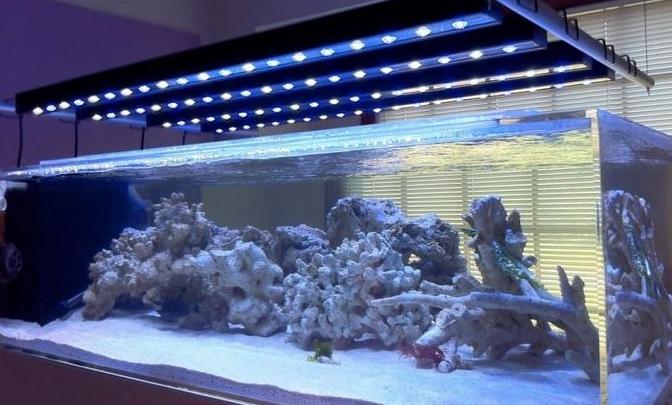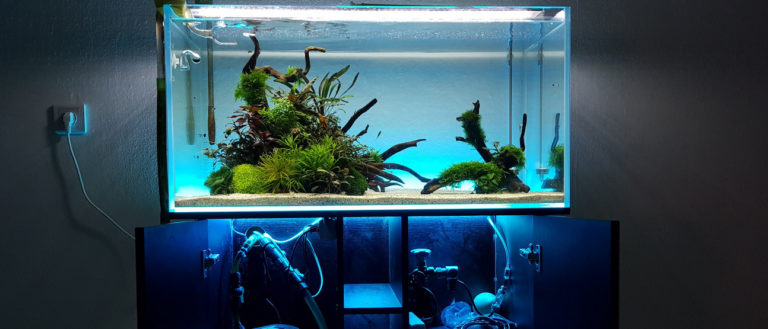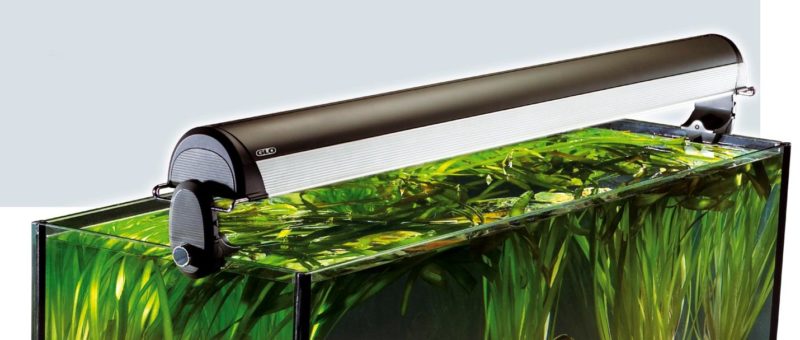What lighting should be in an aquarium
Lighting for an aquarium is a very important criterion. Thanks to the light, algae and plants produce oxygen, which is essential for the underwater inhabitants. But not all light sources can provide good light quality. In this case, the plants will begin to take on a lifeless appearance, yellow and brown spots will appear on the leaves, and then they will wither away. The process of photosynthesis requires good light. Let's take a closer look at this topic and figure out how to properly make light for the aquarium.
Features of lighting
Lighting for the aquarium performs not only a decorative function. The main task of the light bulb is to create a powerful flux of light to saturate the layers of water with the right amount of light. The development of life in it directly depends on light.
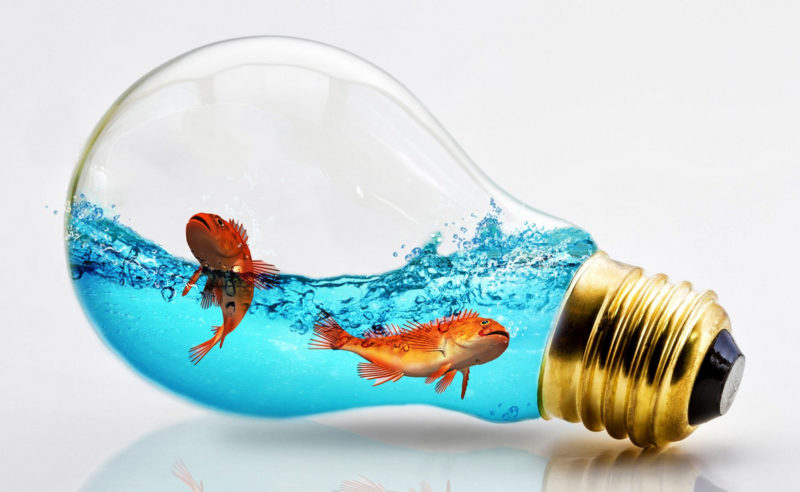
The time of day for many underwater plants also does not matter. To correctly calculate the lighting in the aquarium, you need to familiarize yourself in detail with each representative of your underwater world. It turns out that many of them develop precisely at night, and therefore the lighting regime must be properly planned.
It is not necessary to monitor the process yourself to ensure that the mode is followed precisely. You can use an inexpensive programmable equipment, which will ensure the correct light bulbs turn on at the right time. Excessive light is detrimental to plants and fish, as well as its lack.
In the calculations, it should be noted that the red and blue spectrum is required for the development of plant life. The blue lamp should have a wavelength of 43-450 nanometers, and the red spectrum should correspond to a value of 660 nm (not lower, but exactly that much). Keep in mind that the brightness of the red flux should be higher than the blue, due to the greater resistance of the water when passing through.
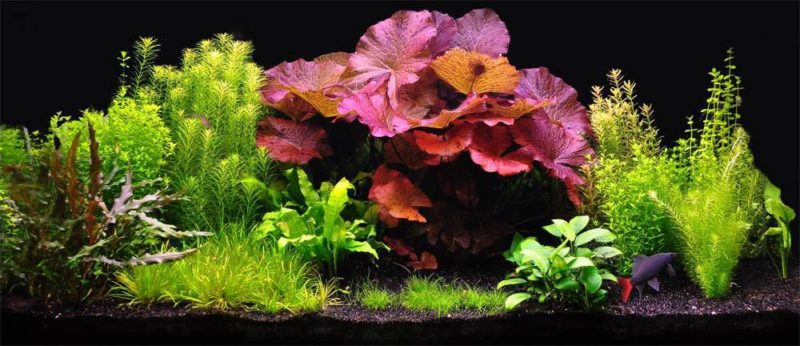
What kind of lamps are better for the aquarium
[ads-quote-center cite='Mark Twain']Twenty years from now you'll be more disappointed with the things you didn't do than the things you did. So set sail from a quiet wharf. Feel the tailwind in your sail. Move forward, act, discover![/ads-quote-center]
Just 20 years ago, only fluorescent and incandescent bulbs were used as a light source for the aquarium. Today their use is practiced, but alternative light sources with more energy-efficient characteristics and elements that give more luminous flux.
Useful video on choosing a fixture for aquatic dwellers.
The following five types of lamps are used as lighting:
- incandescent bulb;
- incandescent halogen bulb
- fluorescent
- energy-saving lamps;
- LED lighting.
Incandescent bulb
[ads-quote-center cite='Frank Hubbard']"The expert is the man who no longer thinks; he knows."[/ads-quote-center]
The standard incandescent lamp is ideal for lighting an aquarium, but its main disadvantage is its high power consumption and considerable heat generation, which can have an extremely undesirable effect on the underwater inhabitants. It is based on a luminous filament of refractory metal, located in a vacuum.
Apply such a light with reflectors and heat sinks in the top cover for shallow aquariums. As a rule, the light flux of the lamp is not enough to penetrate the water column to the bottom of the container depth of 50 cm. 100 W lamp emits a luminous flux equal to approximately 1000 Lm.
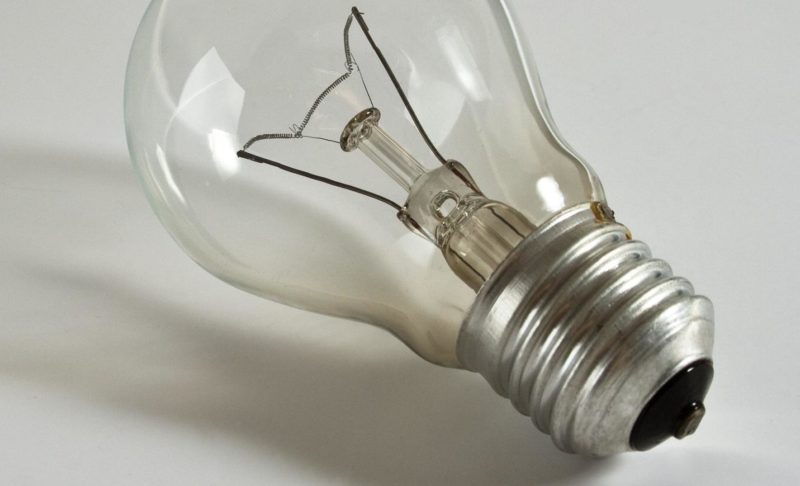
Halogen
The design of the lamp is exactly the same as a simple incandescent lamp, only instead of a vacuum, gas is pumped inside the lamp. Halogen bulbs have a powerful luminous flux but have the same disadvantages as simple incandescent bulbs and need a heat sink. If you decide to use incandescent bulbs, choose halogen bulbs, their power is enough to illuminate aquariums with a depth of up to 70 cm.
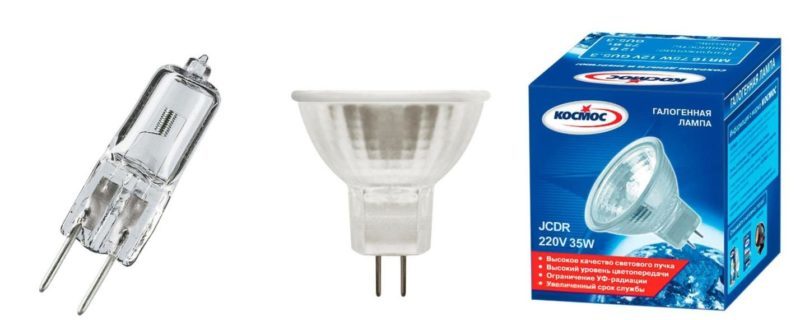
Fluorescent
Gas discharge lamp - is based on gas saturated with mercury vapor. Due to the coating of phosphor on the walls of the glass tube emits ultraviolet radiation. The lamp has a wide spectrum and has a relatively low power consumption ratio.
This type of lamp is successfully ahead of incandescent lamps due to its superiority. Excellent solution for illuminating aquariums up to 60 cm deep. Mounted in the top lid. These lamps usually come with the aquarium and are considered the golden mean for efficient lighting.
The disadvantage of lamps is a gradual fading of luminous flux, this is due to the burnout phosphor. Requires periodic replacement.
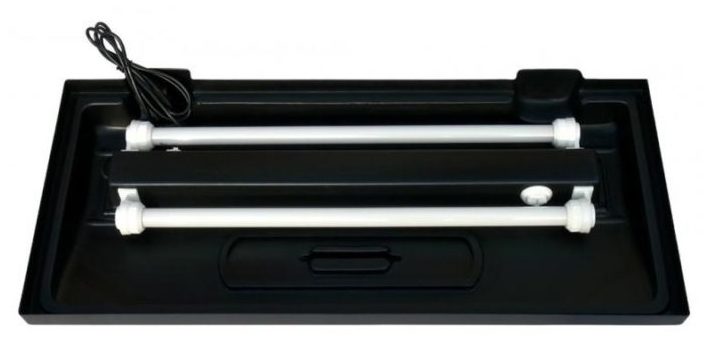
Energy-saving
Are a kind of linear predecessors. The meaning is exactly the same. This is a modern gas-discharge independent bulb (the device is rather complicated, so I will call this bulb a device).
The electronics necessary to ignite it is installed in the base of the device. Good light output, low power consumption, long life. The disadvantage is that it can not be installed in large deep-water aquariums. In this case, it is used in combination with other light sources (e.g., LED strip or halogen lamp).
| Incandescent | LED | Energy-saving | |
| Lm/W efficiency | 30 | 90 | 10,5 |
| Lifetime, hours | 1000 | 50000 | at least 20000 |
| Operating temperature, deg.C | above 150 | Up to 75 | over 100 |
| Created luminous flux, lm | Power, consumed from the network, W | ||
| 200 | 20 | 2 | 6 |
| 400 | 40 | 4 | 12 |
| 700 | 60 | 9 | 15 |
| 900 | 75 | 10 | 19 |
| 1200 | 100 | 12 | 30 |
| 1800 | 150 | 19 | 45 |
| 2500 | 200 | 30 | 70 |
LED
LED devices are the favorites in this segment. They have a good luminous flux and low power consumption. Lighting for the aquarium is performed by LED lamps and LED strips.
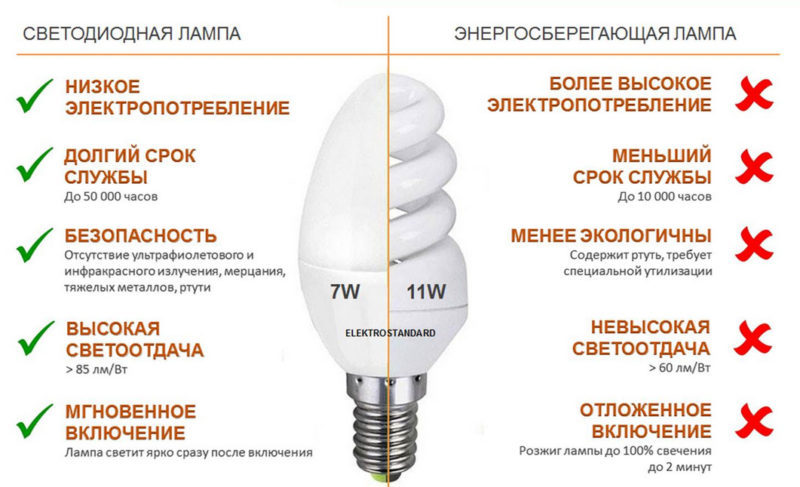
With phytolamps you can achieve optimal light levels in the aquarium, their spectrum and wavelength are fully consistent with the necessary level for the development and prosperity of life in the aquarium.
Ease of installation, the ability to make a deep-water light and use as a décor to illuminate certain areas of your reservoir is their main advantage. Plus low power consumption and the ability to connect to automatic triggering devices at the right time.
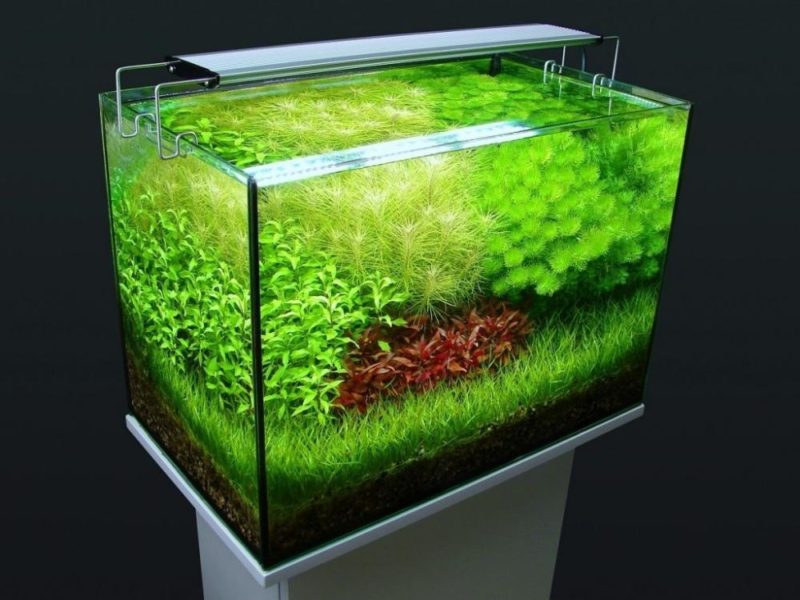
An example of calculating lighting for an aquarium
[ads-quote-center cite='Dale Carnegie']"Personally, I like strawberries and cream, but for some reason the fish prefer worms. That's why when I go fishing, I don't think about what I like, but what the fish like."[/ads-quote-center]
The parameter illuminance is measured in Lux, and luminous flux in Lumens. In the case of an aquarium, the units can be equated, as 1 Lux illuminance = 1 Lumen of light flux directed per square meter of area.
E=F/S, where E is the illuminance, F is the luminous flux S is the area of the area.
The luminous flux is indicated on the box of the luminaire, guided by this data, calculate the required power of the luminaire for the aquarium according to the formula and the accepted standards. A good bright light is considered illumination equal to 30-40 lux per liter of water.
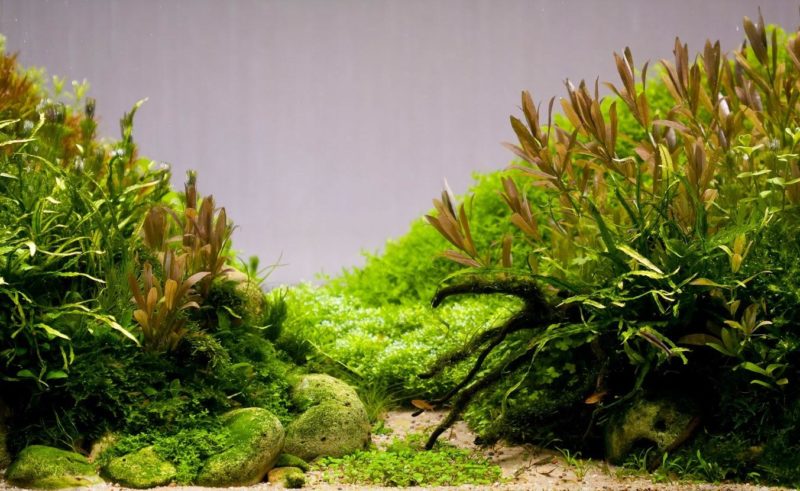
Consider an example: Let's say we have an aquarium one meter long, 50 cm deep and 60 cm high. All calculations are made in meters, for this we translate our length and width, we get 1 m and 0.5 m, multiplying these values, we get the value 0.5 m2.
The table above indicates that the LED bulb gives 90 Lm of luminous flux per watt. Suppose we have a lamp with 20 watts, so the luminous flux is 20 * 90 = 1800 Lm. Dividing this value by the area of the aquarium, we get 1800/0.5 = 3600 lux.
The volume of our aquarium is cubic, so multiplying the length, width and height will get 1*0.5*0.6 = 0.3 m3which equals 300 liters of water. Dividing calculated illumination of 3600 lx by volume of water we get value of illumination per one liter 3600/300 = 12 lx. Consequently, the calculation for quality lighting of an aquarium of this magnitude: we We need at least three of these lamps or one lamp with at least 60W power.
Daylight regime
The day mode is 12 hours. During this time, the maximum intensity of illumination is used. It is necessary to familiarize in detail with the inhabitants of the animal and plant aquarium. It is possible to include special light sources at night. Some species of plants wake up at night and need light.
[tds_council]To simplify the task use time relays. Such devices can turn lights on and off at a set intensity or at a set time.[/tds_council]
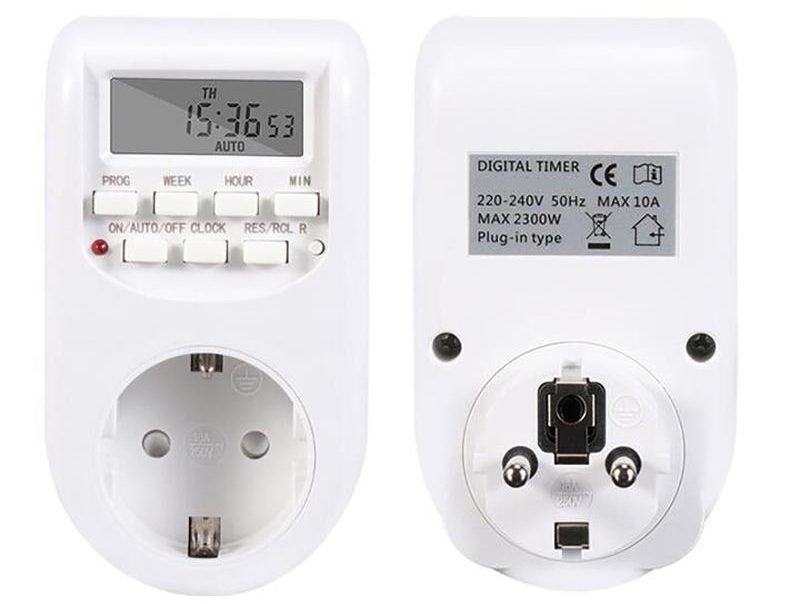
Conclusion
Maintain proper lighting conditions in the aquarium. This will ensure active growth and comfortable conditions for its inhabitants. Installation of modern equipment does not require complex maintenance and gives the convenience of use. Nighttime illumination with blue and red beams will not only add growth to your plants, but also decorate your room with a pleasant light.
